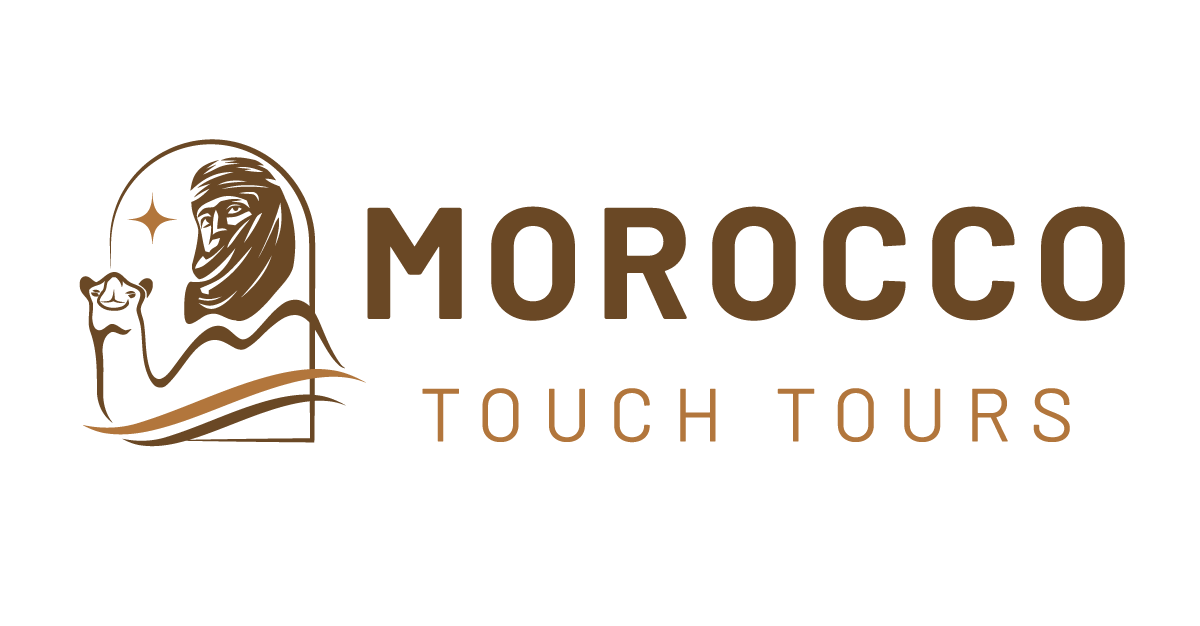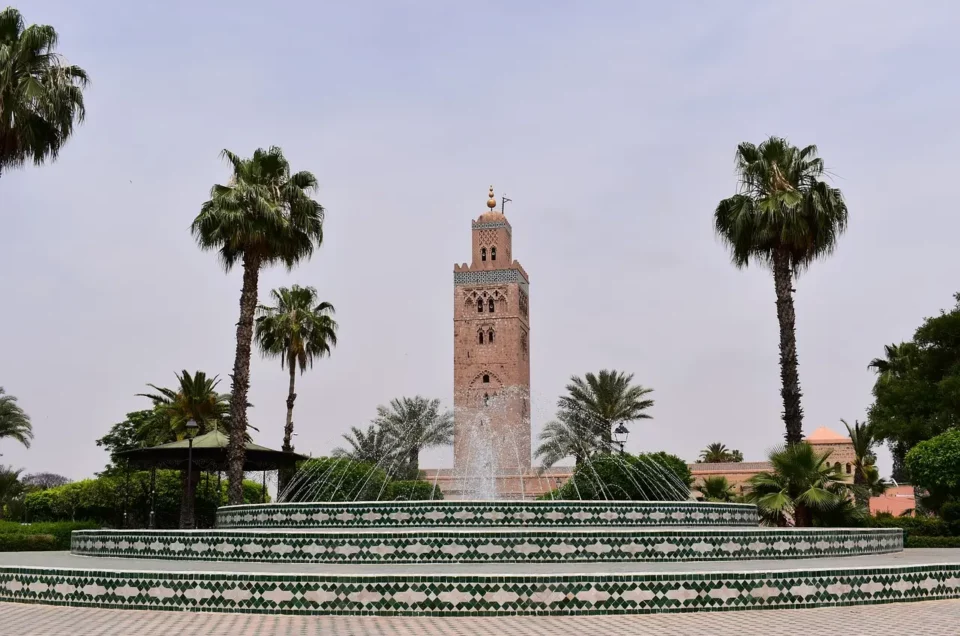The Symbol of Marrakech
The Koutoubia Mosque is not just a religious structure; it’s a symbol of Marrakech and one of North Africa’s most beautiful monuments. Its aesthetic and architectural significance has inspired countless imitations, making it a must-visit landmark in the city. Whether you’re a tourist capturing its grandeur or a devout Muslim coming to pray, the Koutoubia Mosque is a sight to behold.
Location: The Heart of Marrakech
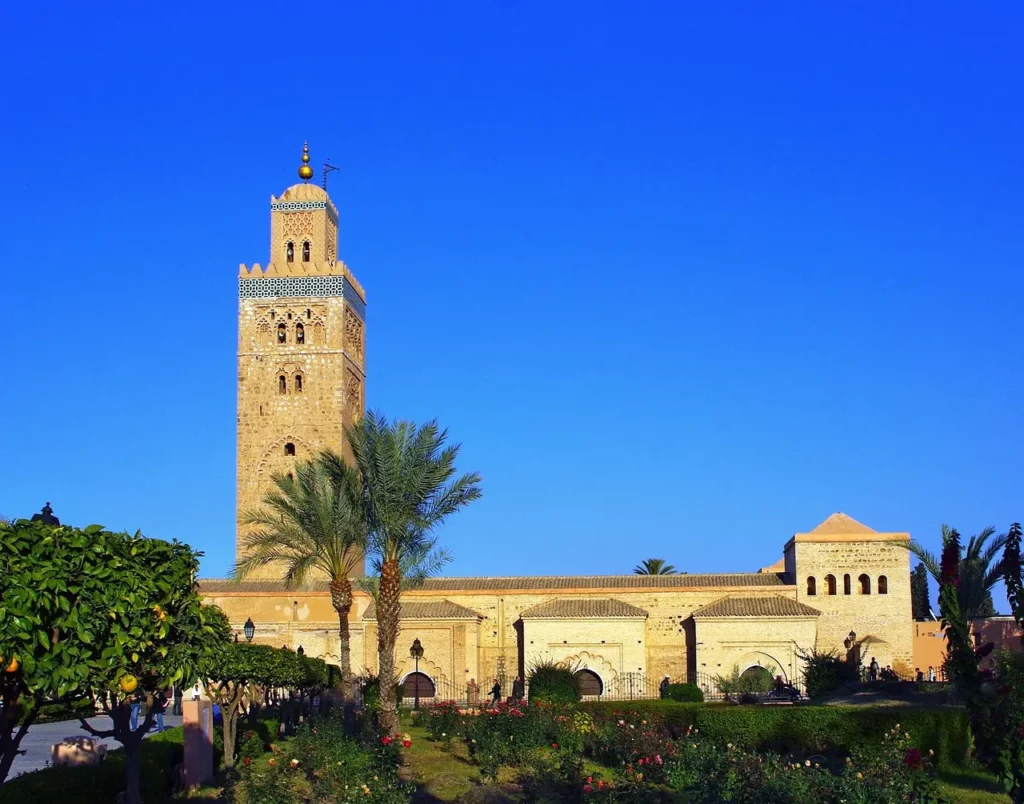
Proximity to Key Attractions
Situated at the beginning of Mohamed V Avenue in the historic Medina, the mosque is less than 200 meters from the famous Jemaa El Fna Square. It’s an essential stop for anyone exploring the Medina or the modern part of Gueliz.
Surrounding Features
The mosque is adjacent to the Sidi Ali Belkacem cemetery and the Lalla Hasna garden. It also neighbors an old mosque and the former French Consulate, now transformed into the Dar Moulay Ali Museum.
The Historical Journey: From Almoravides to Almohads
Founding and Initial Construction
The mosque was initially built in 1120 by Emir Almoravide, Ali ben Youssef, who fortified Marrakech and extended his influence across Morocco and beyond.
Reconstruction and Finalization
Due to alignment issues with Mecca, the construction was resumed by Abd al Mumin, the first Caliph of the Almohad dynasty. The mosque took its final form around 1196 under the reign of Abu Youssef Yacoub El Mansour.
Recent Renovations
The last significant renovation took place in 1990, with additional external installations completed in 2017.
Architectural Grandeur: A Masterpiece in Stone
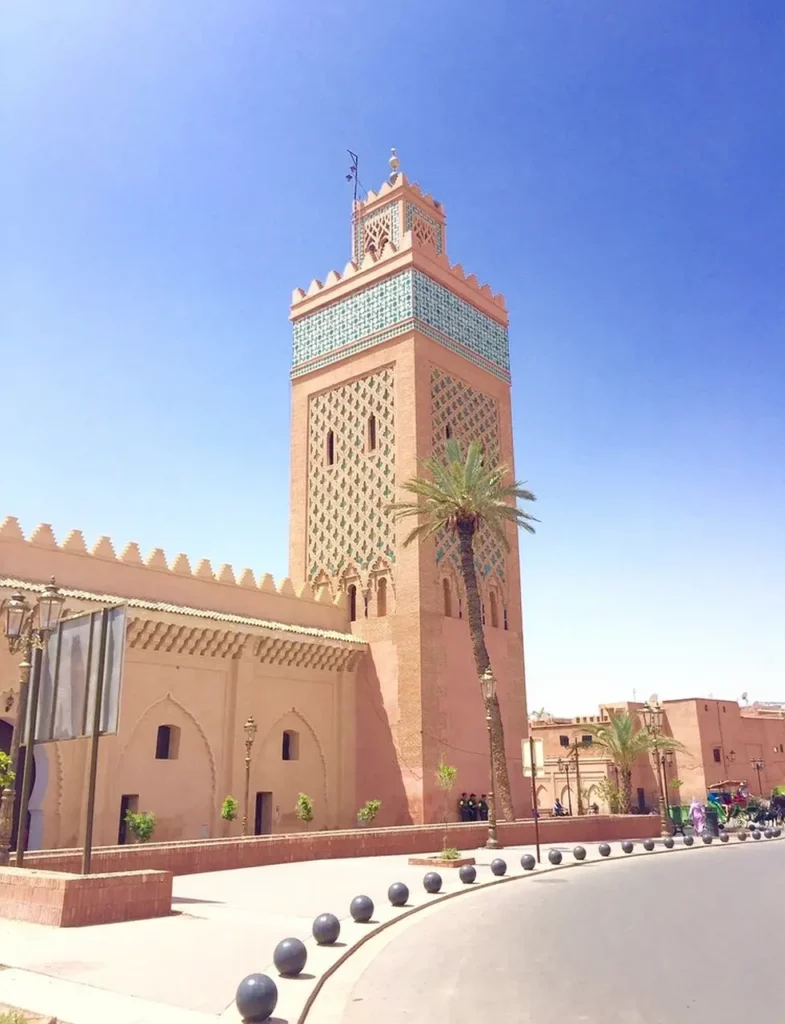
Dimensions and Capacity
The mosque is 90 meters long, 60 meters wide, and its minaret reaches a height of 77 meters. It can accommodate more than 20,000 prayers.
Design Influence
Its design has inspired other iconic structures like the Giralda Mosque in Sevilla, Spain, and the Hassan II Tower in Rabat, Morocco.
Interior Layout
The mosque follows a T-shaped plan, featuring a large interior courtyard, a peripheral portico of columns, and a large prayer room with 17 naves.
Artistic Elements: The Almohad Aesthetic
Interior Simplicity
The mosque’s interior is a testament to the Almohad dynasty’s asceticism, featuring uncarved arches and raw materials.
Exterior Richness
In contrast, the exterior is adorned with intricate relief sculptures, earthenware bands, and zelliges.
Practical Information: What You Need to Know
Entry Restrictions
While the adjoining gardens are open to all, the mosque itself is off-limits to non-Muslims.
Photography Tips
The mosque is photogenic both day and night, offering various vantage points from Jemaa El Fna Square and Lalla Hasna Park.
Special Events
During Ramadan, the mosque’s esplanade serves as a massive prayer square, accommodating thousands of worshippers.
A Living Monument
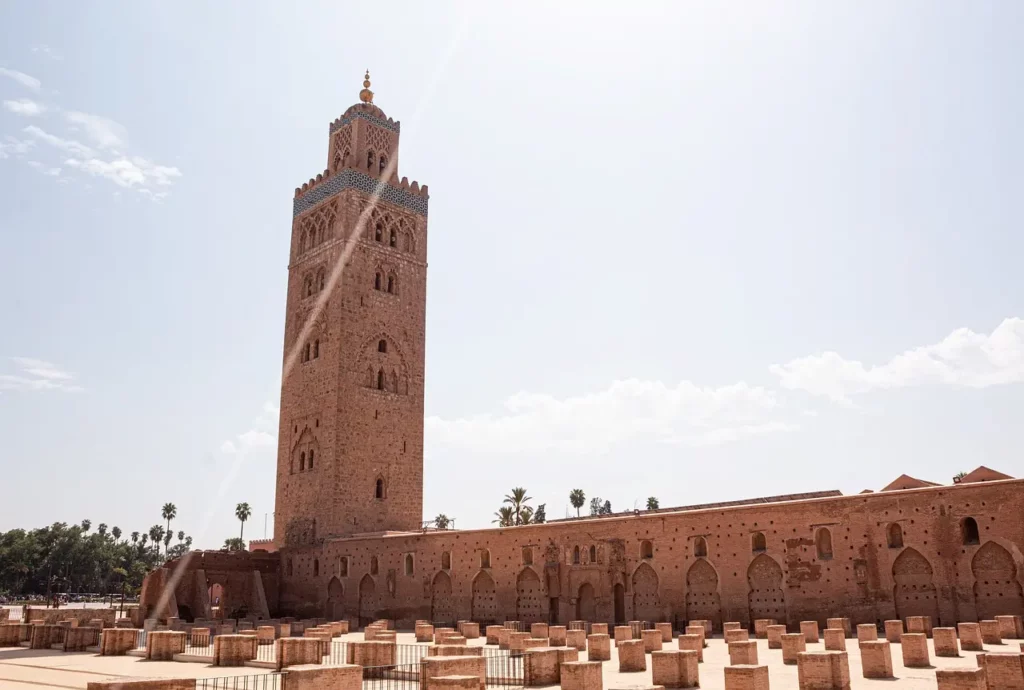
The Koutoubia Mosque is more than just a building; it’s a living monument that encapsulates the rich history, architectural brilliance, and cultural significance of Marrakech. Whether you’re a history buff, an architecture enthusiast, or a spiritual seeker, the Koutoubia Mosque has something to offer you.
